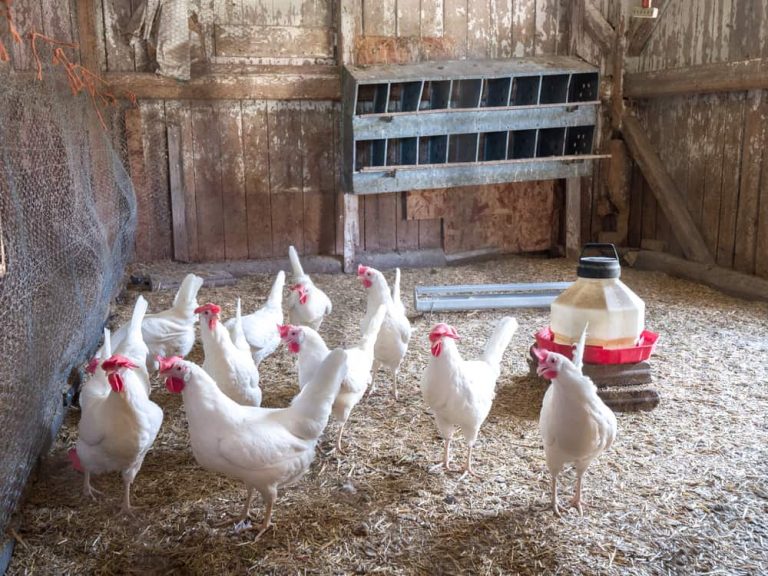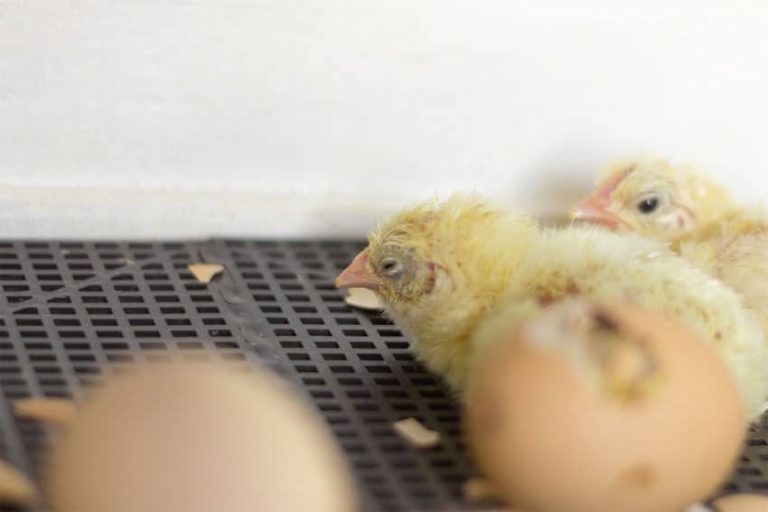Chickens can be wonderful pets, but they are also good side-hustle. You will need to expand the flock at one point. You can achieve this in either one of two ways; naturally or artificially using an incubator.
Before reviewing the top 7 best incubator thermometers and hygrometers, let’s explain these two options.
Contents
Going the Natural Way
First, you can let nature take the course. Here, the laying hen stops and goes broody. It then sits on the eggs she laid or stole for 21 days to hatch them. The hen provides optimal temperature and humidity for the eggs to hatch into healthy chicks.
A few problems can arise if you go with this option, though:
- Broody hens will stop laying eggs. Is this good news for those who keep chicken for egg collection? Certainly, no, it isn’t. If a rooster isn’t involved, the hen may sit on the eggs for the rest of its life. That means no more eggs for the period.
- Broody hens are likely to ‘infect’ others with their broodiness. Soon, the entire flock will be brooding. Egg production will cease completely.
- Broody hens are territorial and aggressive. They will puff their feathers out and screech at you and anything else that approaches their nest. Some breeds become so fierce; that they can even bite children and pets, injuring them.
Using an Incubator
Although nature provides the best incubator, the disadvantages we discussed limit its use. Luckily, technology has made it possible to use an artificial incubator. Your chicken can lay eggs all year round. Thus you can start a new flock without having to interrupt your business.
However, incubators cannot work alone. They need humidity, heat, and other factors to work properly. All these factors must be maintained within a narrow range. Put differently, you must continuously monitor the aspects if you must get the best results.
Thus you will need the best incubator thermometer and hygrometer. Our aim here is to provide you with in-depth information to allow you to make an informed choice. In the end, you will be able to buy the best thermometer or the best hygrometer.
Top 7 Best Incubator Thermometer And Hygrometer
After deep and extensive research on this topic, we have narrowed it down to 7 of the best temperature and humidity sensors for incubators. Please stay with us as we discuss each of these. Maybe you can get lucky and find what you are looking for here.
1. ThermoPro TP50 Digital Hygrometer

The ThermoPro TP50 Digital Hygrometer is a good one. It’s a multipurpose thermometer and hygrometer, which you can with your incubator. High accuracy levels make ThermoPro TP50 ideal for keeping the optimal conditions in the incubator.
According to the manufacturer, the temperature accuracy range is plus/minus 1oF while humidity is ±2% in range and ±3% out of range. What does this mean?
The high sensitivity and accuracy mean the digital hygrometer and thermometer will detect small changes in the factors. You can then adjust immediately and maintain the necessary conditions in the incubator.
The temperature range it can measure is 58°F -158°F (-50°C -70°C) while that of humidity is 10% to 90%. A Face Icon Comfort Level Indicator allows you to monitor the conditions in the incubator. You will know when to humidify and dehumidify.
High and low records are displayed at all times. This allows you to compare your current readings to the previous ones. With such information, you can constantly monitor the incubator for maximum hatchability.
The ThermoPro TP50 is portable. It weighs just 2.72 ounces and comes with two mounting options – a stand for the tabletop and a magnet. Thus you can simply mount it on top of the incubator. If the incubator is metallic, then you can attach it to one of the walls.
Do not worry if you haven’t used a thermometer and hygrometer before. The device is incredibly easy to use. The data refreshes every 10 seconds. This gives you real-time monitoring of the factors in the incubator. You can even choose the units of temperature readings.
Pros
- User-friendly indicator of parameters
- Multipurpose hygrometer and thermometer
- Decent accuracy levels with a low error margin
- Quick refresh rate
- Portable design with a magnet attachment and tabletop options
Cons
- The accuracy of readings reduces with time
- A backlight is desirable
2. Govee Bluetooth Hygrometer Thermometer

One lovely feature we liked with the Govee is the Bluetooth feature. Simply sync it with your smartphone, and you can remotely monitor the incubator conditions. The Bluetooth range is 70ft to 230ft.
This device works with incubators and other installations that need close and constant monitoring. Even more interesting is that it can support multiple smart humidity gauges through the Govee Home app. This means even greater versatility.
It is fitted with a Swiss-made sensor. The sensor has an accuracy temperature level of ±0.54℉/±0.3℃, and a humidity accuracy level of humidity is ±3%RH. Thus you can adjust the humidifier or dehumidifier promptly. This way, you can maintain optimal conditions in the incubator.
Furthermore, a smart alert notification allows you to react quickly to any changes in the incubator conditions. A clear, user-friendly 2.2-inch LCD lets you view air quality through big, bold readings. You can read the display accurately regardless of the angle and distance of view.
Two-face icons show dry, wet, and comfortable levels. Thus you will ensure all parameters are optimal for the eggs to hatch.
Govee Bluetooth Hygrometer and Thermometer offer free data storage and export. Therefore, you can easily track real-time data via a curve in hours, days, weeks, months, or years. It can back up two years of data and export. This is important in the multipurpose use of the device.
The device is so portable; that you can include it in your everyday carry pack. It’s compact and lightweight. Carry it anywhere you want. A 3-mounting option (stand, hanging hole, and adhesive) allow for better, space-saving placement.
Pros
- Remote Bluetooth monitoring
- Decent accuracy and quick response
- Clear, user-friendly LCD
- Free data storage and export
- Portable design with three mounting options
Cons
- The Govee home app is great but prone to failure
- The app is useless when you are away from home
3. Goabroa Mini Hygrometer Thermometer

A truly compact and lightweight best incubator thermometer hygrometer we found is the Goabroa Mini. This remarkable sensor for incubators is well designed and offers good performance. It responds pretty fast with a 10-second refresh rate.
Such a great level of sensitivity is the function of 4 sensitive vents. These vents deliver accurate and up-to-date readings of temperature and humidity. The sensor maintains the accuracy of readings to +/- 1%. The temperature range is -58°F ~ 158°F, while humidity is 10% RH ~ 95% RH.
All the data and readings are displayed on a user-friendly mini-digital LCD. You will easily and quickly appreciate the readings. If the readings go off, you can make adjustments necessary to ensure optimal conditions in the incubator.
This small pocket-sized device is incredibly versatile. You can use it to sense temperature and humidity in an incubator and other appliances. Examples of where you can use them include cigar humidors, brooders, guitar cases, and reptile tanks.
Pros
- Accurate monitor with fast response
- Mini digital LCD offers quick readings
- Mini-size, pocket-friendly design
- Multipurpose temperature and humidity sensor
- Low cost but decent quality
Cons
- The humidity reading may be slightly off
- It’s difficult to calibrate
4. IncuTherm Plus Digital Thermometer/Hygrometer

Another best hygrometer for incubator you can consider is the IncuTherm Plus Digital Thermometer/hygrometer. Besides monitoring humidity, the device also measures temperature and air quality.
The user-friendly interface has buttons that allow monitoring of the factors. In case of any deviation, you can quickly humidify or dehumidify to maintain optimal conditions. A remote probe measures the humidity and temperature.
IncuTherm designed the probe to fit through vent holes of Little Giant and Hova-Bator incubators. They are not for you if you own Genesis or Brinsea Incubators. The heat measurement can be displayed in Celsius or Fahrenheit. You are free to choose the unit you are more comfortable with.
The built-in low/high memory stores and logs the lowest and the highest humidity and temperature readings. You can be sure to maintain the right conditions for a successful hatch.
The IncuTherm Plus is industry calibrated to be accurate within +/- 1°F (0.5°C) in the temperature ranges. This accuracy level is twice as precise as that of standard thermometers currently on the market.
You will also love the large display with a hardwired connection. With it, you can easily read and react to subtle changes in the conditions within the incubator. You won’t need to plug the sensor in. The LCD is user-friendly, but the cord somehow reduces the compactness.
Magnets fitted on the back of the device allow it to stick to any magnetic surface of the incubator. An alternative mounting option is a pop-out stand. It keeps your thermometer/hygrometer sensor propped up so you can read the screen with ease.
Pros
- Minimum/maximum memory
- Readings are available in both temperature units (Celsius and Fahrenheit)
- Large display with a hardwired connection
- Two mounting options
- High accuracy and rapid response
Cons
- Difficult to calibrate the parameters individually
- It consumes batteries pretty quickly
5. IncuTherm Digital Thermometer Hygrometer

Although the IncuTherm Digital thermometer hygrometer share many of the features we have described previous product, it has a few differences. It is battery-powered but does not have a corded probe like the IncuTherm Plus.
This unit can accurately measure and display the relative humidity and temperature concurrently. The temperature can be shown in both Celsius and Fahrenheit units. A button allows you to choose the unit you would like for the temperature reading.
A high and low memory feature stores the highest and lowest heat readings since the previous reset. The accurate displays allow you to maintain the right conditions in the incubator for a healthy hatch. Unlike the Plus model, it does not limit you to particular brands of incubators.
Similar to other IncuTherm series, it has been factory calibrated to an accuracy range of +/- 1°F (0.5°C) in the incubator. According to the manufacturer, the accuracy level is two times the conventional thermometers currently on the market.
The industry calibration is great. However, it does not allow users to calibrate their thermometers/hygrometers once they buy them. This may reduce the accuracy level later in use. Nevertheless, the product is covered by a one-year hassle-free guarantee.
The device is sturdy and lightweight, with a large LCD. You won’t have to strain to appreciate the readings displayed. Besides, you can read it from any angle. The backside has two magnets for easy attachment to the magnetic surfaces. There is also a flip-out stand for tabletop mounting.
Pros
- Readings in both Celsius and Fahrenheit
- Compact design with a large LCD screen
- Two strong mounting magnets on the back
- Memory storage with high/low readings
- Flip-out design for easy mounting
Cons
- Impossible to calibrate after use
- Temperature readings may need confirmation
6. Egg-o-Meter – A Better Egg Thermometer!

Most incubator thermometers do little more than measure the temperature in the incubator. However, they are unable to measure the heat level within the egg itself. In other words, they are unable to show the actual egg temperature.
The Egg-o-Meter is a thermometer that can measure the temperature that is inside the egg. Since embryos produce and lose heat, measuring the actual temperature of the egg is vital. Besides taking measurements, this thermometer regularly turns the heat source on and off as necessary.
A temperature sensor is embedded in the synthetic egg, which closely resembles the heat within the egg. Thus you will know the actual heat readings around the embryos within the eggs to adjust the heat source appropriately.
Egg-o-Meter has a built-in alarm that you can set to alert you when temperatures go out of range. The device allows you to select at 1oC increments. The min/max memory lets you know the temperature range the eggs have experienced since you checked last.
The sensor comes with a wire attachment. Use it to mount the unit in a location of your convenience. Its unique, slim, and lightweight design means you can set on top of eggs. Alternatively, you can mount it through its flip-out stand or use magnets on the back for attachment.
Pros
- Measures temperature inside an egg
- Accurate and fast refresh rate
- Minimum/maximum memory readings
- Displays in either Celsius or Fahrenheit
- The built-in alarm allows for real-time incubator monitoring
Cons
- Measures only temperature
- There are questions about durability, especially of the connector wire
7. Veanic 2-Pack Mini Digital Hygrometer Thermometer Gauge

The Veanic 2-Pack Mini Digital Hygrometer Thermometer Gauge makes it last among the seven best products we have reviewed. This, however, does not mean it is low-quality.
This highly versatile device works with incubators, humidors, and reptile plant terrariums. You can also use it with a greenhouse and guide case. It accurately measures the temperature and humidity in the incubator. This way, you can provide the developing embryos with the right conditions for growth.
The Veanic Mini-Digital Hygrometer/Thermometer has a sensor on a single external probe. The probe lets you accurately monitor eggs’ heat and moisture. The sensor is not water-resistant. Therefore, you cannot use it in fish tanks. The readings are displayed on a large and easy-to-use LCD screen.
Unlike the products we have reviewed, the readouts of this model are available only in Fahrenheit (oF). This can be challenging to those who are more familiar with only Celsius readings. The temperature measurement range is -58℉ to 158℉.
The humidity range, on the other hand, is 10% to 99%RH. The readings refresh after every 10 seconds. You will love the high accuracy levels. It can measure temperature to an accuracy range of ±2℉ and humidity accuracy of ±5% RH.
Pros
- Decent temperature and humidity accuracy
- User-friendly digital LCD readouts
- Fast response and refresh rate
- Very versatile thermometer/hygrometer
- It gives value for the money
Cons
- Readouts are available only in degrees Fahrenheit
- It may not be very accurate for vivarium
Our Comprehensive Buyer’s Guide
The reason you are looking for the best incubator thermometer and hygrometer is best known to you. Regardless of your reasons, you still need the best. Several factors contribute.
Here is a list of those factors at a glance:
- The intended use
- Accuracy and response
- Power source and battery life
- Quality of user-interface
- Alerts and remote monitoring
- Data storage and logging
Let’s now dissect each of these factors. If you have already found your match, well and good. If not, they will guide you into making the right decision.
1. The intended use
Incubator thermometers and hygrometers aren’t specifically for incubating eggs. You can also use it with a host of other home appliances and installations. Even when you intend to use it in hatching eggs, it’s important to decide based on the type of eggs.
For instance, some incubator sensors for better suited for hatching chicken eggs. Others may be ideal for incubating reptile eggs. Luckily, most brands are versatile. Therefore, they can be used successfully with multiple applications.
2. Quality of the user-interface
The first thing you will see on a digital electronic product is its display. Therefore, you must consider the user-interfere of each incubator thermometer and hygrometer of interest before you settle on buying it. Is the display bold, clear, and easy to read?
Older users and those with problems seeing need large and bold displays. Check the size of the LCD, the font, and the size of the writings. When you see it displayed on manufacturers’ websites or product descriptions may not be accurate. Conduct further research by reading customer reviews.
3. Accuracy and response
The success of any artificial egg hatching depends on how well you maintain the conditions within the incubator. Temperature and humidity should be monitored closely. Any deviation from the optimal heat and humidity embryos require to mature, and hatch can result in low hatching rates.
You will see accuracy ratings on product descriptions. These are mere claims by manufacturers, marketers, and distributors of vital devices. You need to do your research. Visit user forums, review sites, and owner’s websites.
When shopping, look for a hygrometer rating which is given as ±% RH. The unit represents the margin of error the sensor has. The most accurate humidity sensors currently in the market have an error margin of 1±% RH. They are the best, but even those that have 2-4±% RH are still sensitive enough.
The accuracy range for temperature is in the order of ± oC or oF. An error margin of ±2 to ±10 can is acceptable. Lower error rates are associated with better accuracy. You must keep that in mind when shopping.
The refresh rate is also very important. It allows you better to monitor the small changes in humidity and temperature. Thus you can adjust any conditions by dehumidifying or humidifying the air. Best quality hygrometers have a refresh rate of 10 seconds.
4. Power source and battery life
Incubator hygrometers and thermometers are electric devices that work only when powered by security. This can happen in either one of two ways: wirelessly through a battery or through a power cord.
A battery-powered model is portable and convenient. The batteries have low power and are not that durable. Those with cords must be plugged into the power source. Those cables can be cumbersome, especially those that have corded probes too. Choose according to your needs.
5. Alerts And Remote Monitoring
Unfortunately, only high-quality, often expensive models have alerts and remote monitoring capabilities. But this feature is invaluable. Monitoring the conditions in the incubator remotely through an app can help you better manage the hatchery.
The alerts will help you know if the levels you pre-set have been exceeded or otherwise. Reacting quickly to any changes will make a big difference in the success rate of your incubator. You will spend a little bit more, but it’s a great feature you can’t afford to ignore.
6. Data Storage And Logging
Storing data about the temperature and humidity is crucial. You get the chance to have a historical overview of the humidity levels in the incubator. The data can be stored over long periods or for just a couple of hours.
For example, some models store high and low readings over 24 hours. Most affordable models, however, do not offer any storage at all. You will have to choose depending on your budget and your needs.
Related article: Best Cabinet Incubator Reviews & Buying Guide
FAQs
Qn1: Is an incubator thermometer and hygrometer necessary?
Optimal maintenance and monitoring of these two parameters are crucial for the successful hatching of eggs. The conditions must closely resemble those provided by nature. The best incubator thermometer and hygrometer will help you maintain these conditions.
Qn2: What is the right thermometer for the incubator?
Today, you will find a thermometer and hygrometer both in a single device. This is important because you get to see the readings in a single display. However, you can buy a hygrometer and thermometer differently. In this case, you will have to go for a digital thermometer. It is easy to read.
Qn3: What are the acceptable error margins for the hygrometer and thermometer?
An accuracy level of ±1-5%RH is acceptable for a hygrometer. For temperature, it should not be more than ±5o. Anything more than these are unacceptable. Do not rely on the distributor’s description, as these rates may be exaggerated.
Qn4: How will large temperature variations affect the eggs?
Higher or lower temperatures than normal can interfere with the incubation process of the eggs only when prolonged. As long as you adjust the situation immediately, nothing adverse will happen to your eggs. The hatch rate of the eggs will be very low.
Final Word
We have laid down the facts. It’s upon you to decide now. If you must achieve the best out of your incubator, you must monitor the interior temperature and humidity. If the readings aren’t within the normal constant, take the earliest opportunity to correct them.
The best incubator thermometer and hygrometer are accurate and respond fast. It should also be easy to use and versatile. Base your choice on your budget but remember you only get what you pay for.







